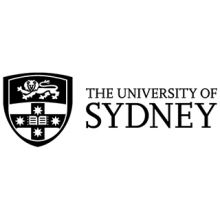Australia’s relief package for universities will replace perhaps one-seventh of the earnings consumed by the coronavirus, new details suggest.
While the package has several facets, the government’s guarantee to maintain grants for domestic teaching is by far the most advantageous part. Universities will receive Commonwealth Grant Scheme subsidies for the enrolments they estimated they would attract this year, rather than the actual student numbers.
Advance payments from the loan scheme, which covers domestic students’ fees, will also be based on 2020 estimates rather than actual enrolments.
Universities earned about A$12.5 billion (£6.4 billion) from these two streams in 2018, the last year for which figures are available. Since then the sector has been allocated additional performance-based funding of around A$80 million while six regional universities have received individual boosts to teaching grants, bringing total funding for domestic delivery to some A$12.6 billion.
The University of Sydney says the coronavirus has absorbed about 5 per cent of its domestic enrolments. If that shortfall is replicated across the sector, the funding guarantee will collectively spare universities from being forced to repay some A$630 million.
Universities can also expect to save several million dollars from the government’s decision to waive or refund regulatory fees until mid-2021.
However, representative body Universities Australia has estimated the sector’s losses at between A$3 billion and A$4.6 billion – an average shortfall of between A$77 million and A$118 million for each of UA’s 39 members – mostly due to plunges in international tuition fee revenue.
This may be an underestimate, with larger losses anticipated by all but one of the universities that have so far disclosed estimates of their 2020 shortfalls. Predictions include A$600 million at UNSW Sydney, A$500 million at the University of Melbourne, A$470 million at The University of Sydney, between A$240 million and A$480 million at the University of Queensland, and A$100 million to A$200 million at Griffith University.
La Trobe anticipates losses of between A$120 million and A$150 million, with Swinburne eyeing a shortfall of A$75 million to A$150 million. Only the University of the Sunshine Coast, among the smallest of Australia’s universities, expects substantially smaller losses of A$29 million.
The government package also includes a suite of short, online “higher education certificates” at discounted fees of A$1,250 or A$2,500 each. Education minister Dan Tehan said universities were gearing up to provide some 20,000 of these certificates, which boost skills in “priority” areas like nursing, teaching and counselling.
Mr Tehan said the courses would help universities “build their domestic student load”, injecting “ballast” in the sector’s financial sustainability. However, it is not clear that they will attract any extra government funding apart from an additional A$7 million for 1,000 places at independent colleges.
Public universities with enrolment shortfalls will be allowed to cross-subsidise the short courses from their unexpended undergraduate or postgraduate funding. But as the government has already guaranteed to maintain their domestic grants, they would have little financial incentive to do so.
Universities with full enrolments will have to make a case to the Education Department for extra funding to deliver the certificates. Even if they proved successful, Australian National University policy expert Andrew Norton said they would have to bear the costs of the fee discounts.
“I do not think this is an attractive proposition at all,” he said. “They should politely decline.”
Register to continue
Why register?
- Registration is free and only takes a moment
- Once registered, you can read 3 articles a month
- Sign up for our newsletter
Subscribe
Or subscribe for unlimited access to:
- Unlimited access to news, views, insights & reviews
- Digital editions
- Digital access to THE’s university and college rankings analysis
Already registered or a current subscriber? Login












